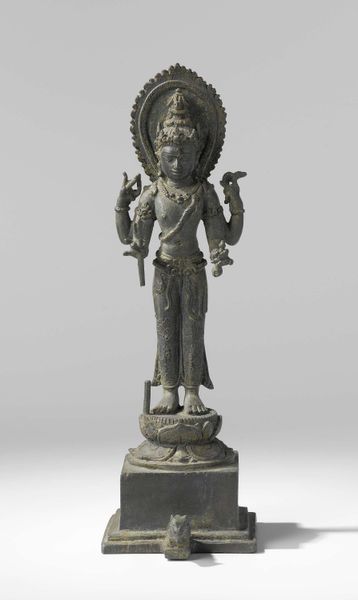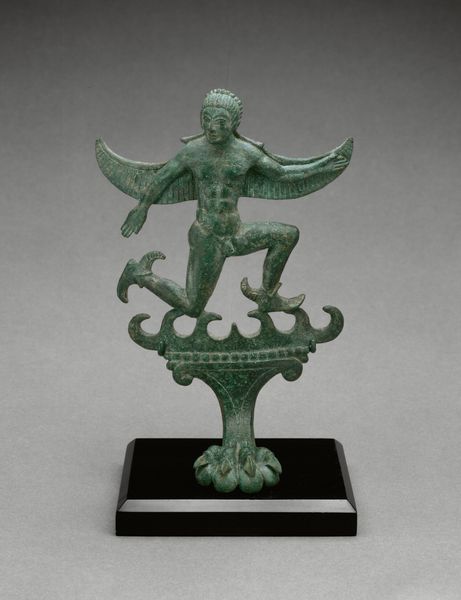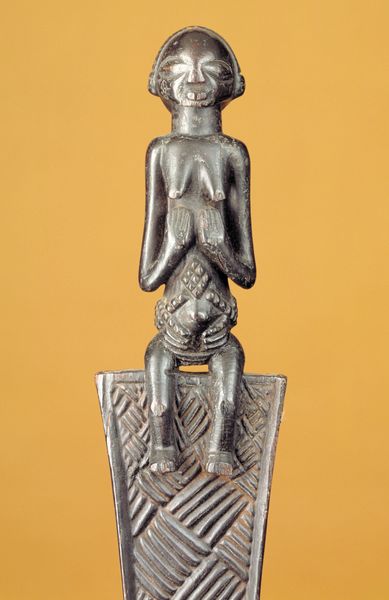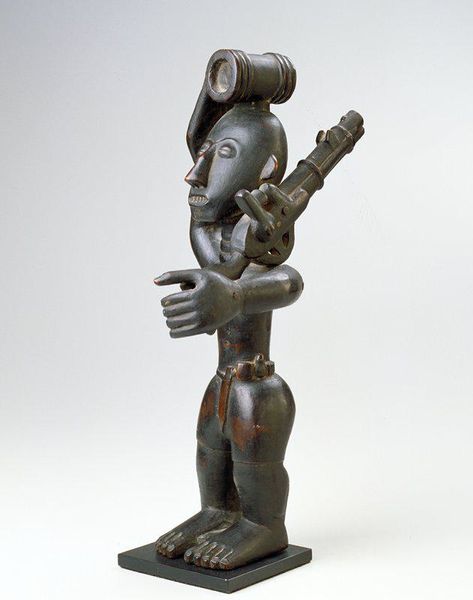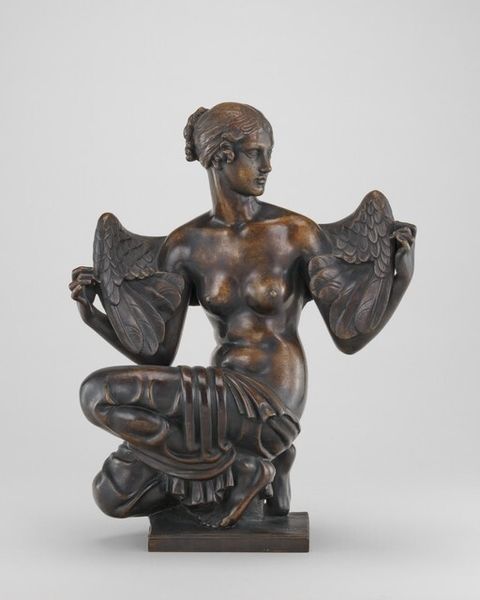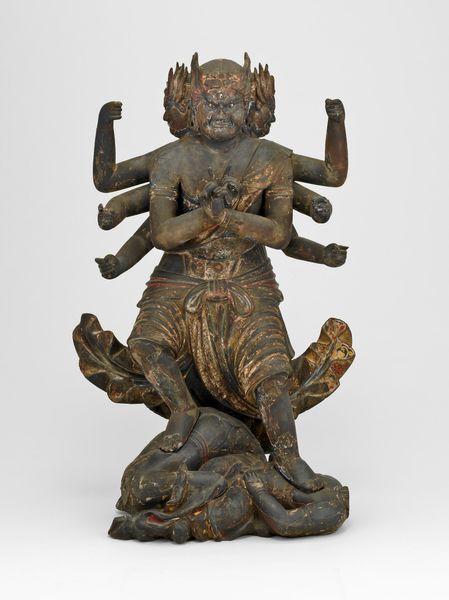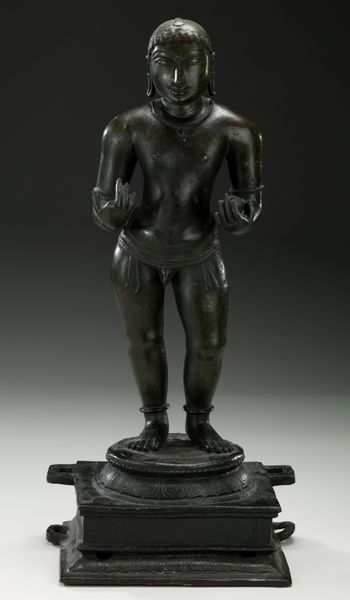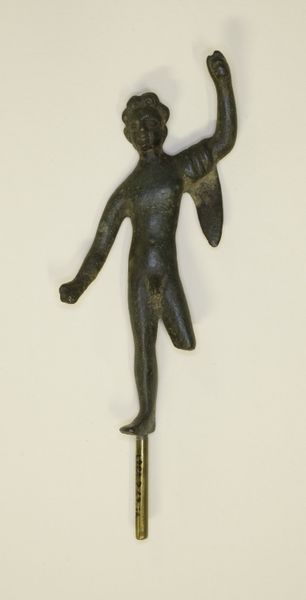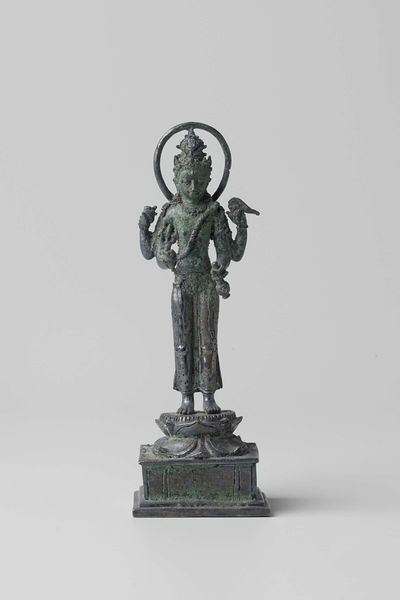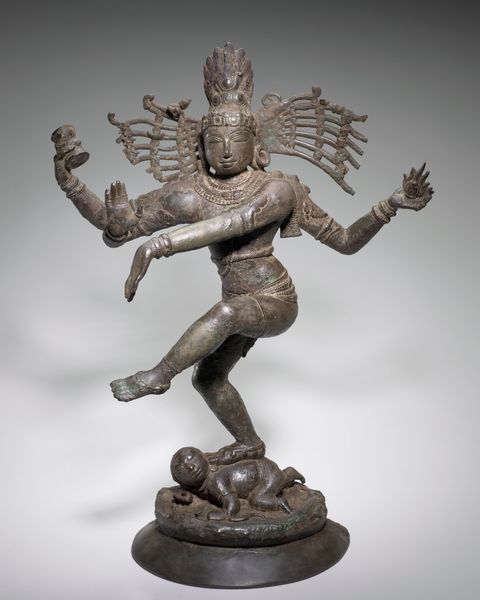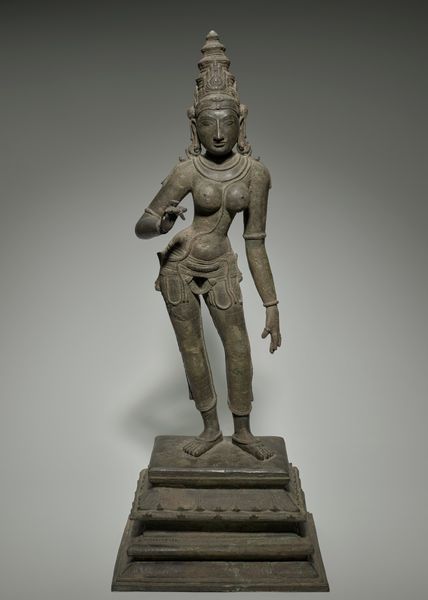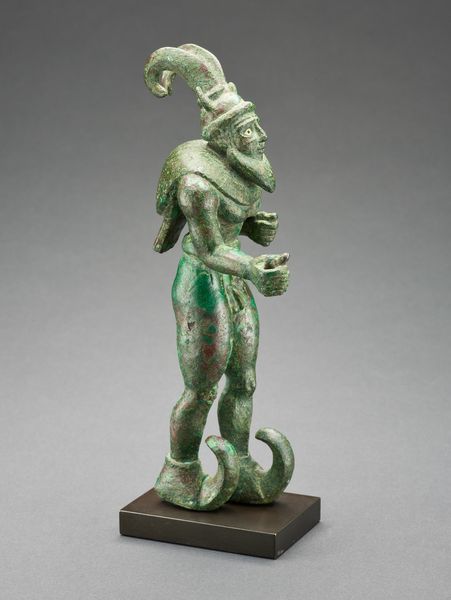
Tirthankara Suparsvanatha in Kayotsarga, or Standing Meditation, Posture and Protected by a Five-Headed Naga c. 7th - 8th century
0:00
0:00
Dimensions: maximum, image and base: H. 35.7 x W. 13.1 x D. 13.2 cm (14 1/16 x 5 3/16 x 5 3/16 in.) figure and naga hood only: H.25 cm (9 13/16 in.) figure, lotus base, and naga hood, excluding square base: H. 28.7 cm (11 5/16 in.)
Copyright: CC0 1.0
Editor: Here we have an anonymous bronze sculpture entitled "Tirthankara Suparsvanatha in Kayotsarga, or Standing Meditation, Posture and Protected by a Five-Headed Naga" currently residing at the Harvard Art Museums. I'm struck by the contrast between the rigid stance of the figure and the flowing, almost organic, quality of the Naga. What do you see in this piece? Curator: The juxtaposition you note is indeed compelling. Formalistically, the sculpture presents a study in contrasts. Observe the figure's smooth, almost featureless torso against the intricate detailing of the Naga's heads. The artist employs line and form to convey both serenity and power. What effect does the base have on your perception of the overall composition? Editor: I hadn't considered the base so much, but now I see how it provides a grounding element, contrasting with the upward movement of the figure and Naga. It really balances the sculpture. Curator: Precisely. The stepped base anchors the upward visual trajectory, providing a stable foundation both literally and symbolically. The artist's manipulation of form and line is quite masterful. Editor: I see it now! I appreciate your insights. Curator: My pleasure. It has been rewarding to explore its visual language with you.
Comments
No comments
Be the first to comment and join the conversation on the ultimate creative platform.
